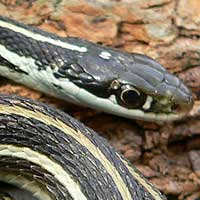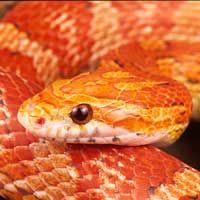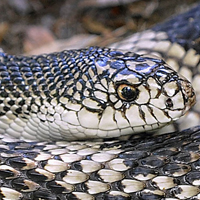Western Ribbon Snake: Everything You Need to Know
The scientific name of the Argentine Boa is Boa constrictor occidentalis. It belongs to the Boidae family, which is commonly known as the boa family.
Scientific Name: Boa constrictor occidentalis
Snake Family: Boidae

Introduction to the Western Ribbon Snake
The Western Ribbon Snake (Thamnophis proximus) is a slender and fast-moving non-venomous snake native to North America. Known for its vibrant stripes and graceful movements, it thrives near water sources and plays a crucial role in maintaining ecological balance. Its striking appearance and docile temperament make it a popular choice for reptile enthusiasts.
Exploring the Habitat of the Western Ribbon Snake
The Western Ribbon Snake is highly adaptable and found in a variety of environments across its range, which spans from the central United States to parts of Mexico. It is most commonly associated with aquatic and semi-aquatic habitats.
Preferred Habitat Features:
- Marshes and wetlands
- Streams and ponds
- Grasslands and meadows near water
- Forested riparian zones
| Region | Habitat Type | Key Features |
|---|---|---|
| Central USA | Grasslands and wetlands | Abundant water sources |
| Southern USA | Riparian zones | Shaded areas near streams |
| Mexico | Tropical lowlands | High humidity and vegetation |
What Does the Western Ribbon Snake Eat?
The Western Ribbon Snake is a carnivorous predator with a diet that primarily consists of small aquatic and semi-aquatic prey. Its feeding habits help control populations of insects and amphibians in its environment.
Common Diet:
- Frogs and tadpoles
- Small fish
- Insects such as crickets and grasshoppers
- Earthworms
- Occasionally small salamanders
In captivity, the diet should replicate their natural preferences as closely as possible. Feeding schedules depend on the snake's age, with juveniles requiring meals 2-3 times per week and adults feeding every 7-10 days.
Behavior and Temperament of the Western Ribbon Snake
The Western Ribbon Snake is known for its active and curious nature. Its diurnal habits make it a dynamic species to observe, as it spends most of its day exploring and hunting for food.
Key Behavioral Traits:
- Diurnal and active during daylight hours
- Non-aggressive but may flee when startled
- Skilled swimmers
- Shy yet curious in captivity
With regular handling and a calm environment, these snakes can adapt well to captivity, making them ideal for experienced keepers and beginners alike.
Health and Lifespan of the Western Ribbon Snake
The Western Ribbon Snake can live up to 10-15 years in captivity when provided with proper care. Maintaining their health involves creating an environment that closely mimics their natural habitat and monitoring for common health issues.
Common Health Concerns:
- Respiratory infections due to high or low humidity
- Parasites, especially in wild-caught specimens
- Shedding issues caused by insufficient humidity
Providing a temperature gradient of 75-85°F, along with clean water for soaking, helps ensure their overall well-being. Regular check-ups with a reptile veterinarian are recommended.
Reproductive Traits of the Western Ribbon Snake
The Western Ribbon Snake is viviparous, giving birth to live young. Breeding occurs in the spring, with females giving birth in late summer or early fall.
Reproductive Details:
- Mating season: Spring
- Gestation period: 2-3 months
- Litter size: 5-20 neonates
- Neonates are independent from birth
In captivity, simulating seasonal changes in light and temperature can encourage successful breeding. A stress-free environment and proper nutrition for breeding pairs are crucial.
How to Handle and Care for the Western Ribbon Snake
Handling and caring for the Western Ribbon Snake requires attention to its natural behaviors and habitat preferences. These snakes thrive in an environment that offers both aquatic and terrestrial elements.
Handling and Care Tips:
- Handle gently and consistently to build trust
- Provide a spacious enclosure with hiding spots and climbing structures
- Maintain a suitable temperature gradient and access to clean water
- Offer a diet that closely mimics their natural prey
With proper care and handling, the Western Ribbon Snake can become a fascinating and rewarding addition to any reptile enthusiast's collection.








